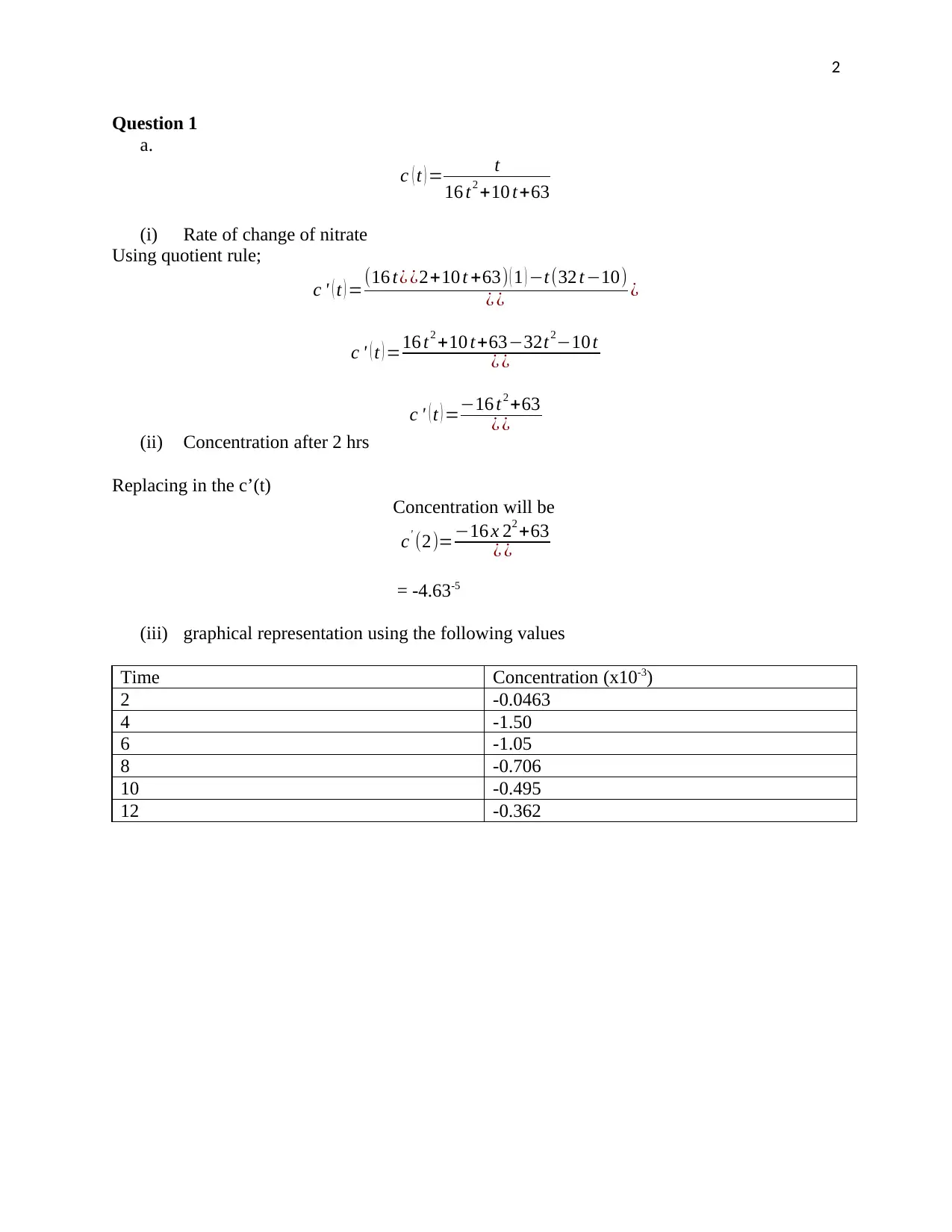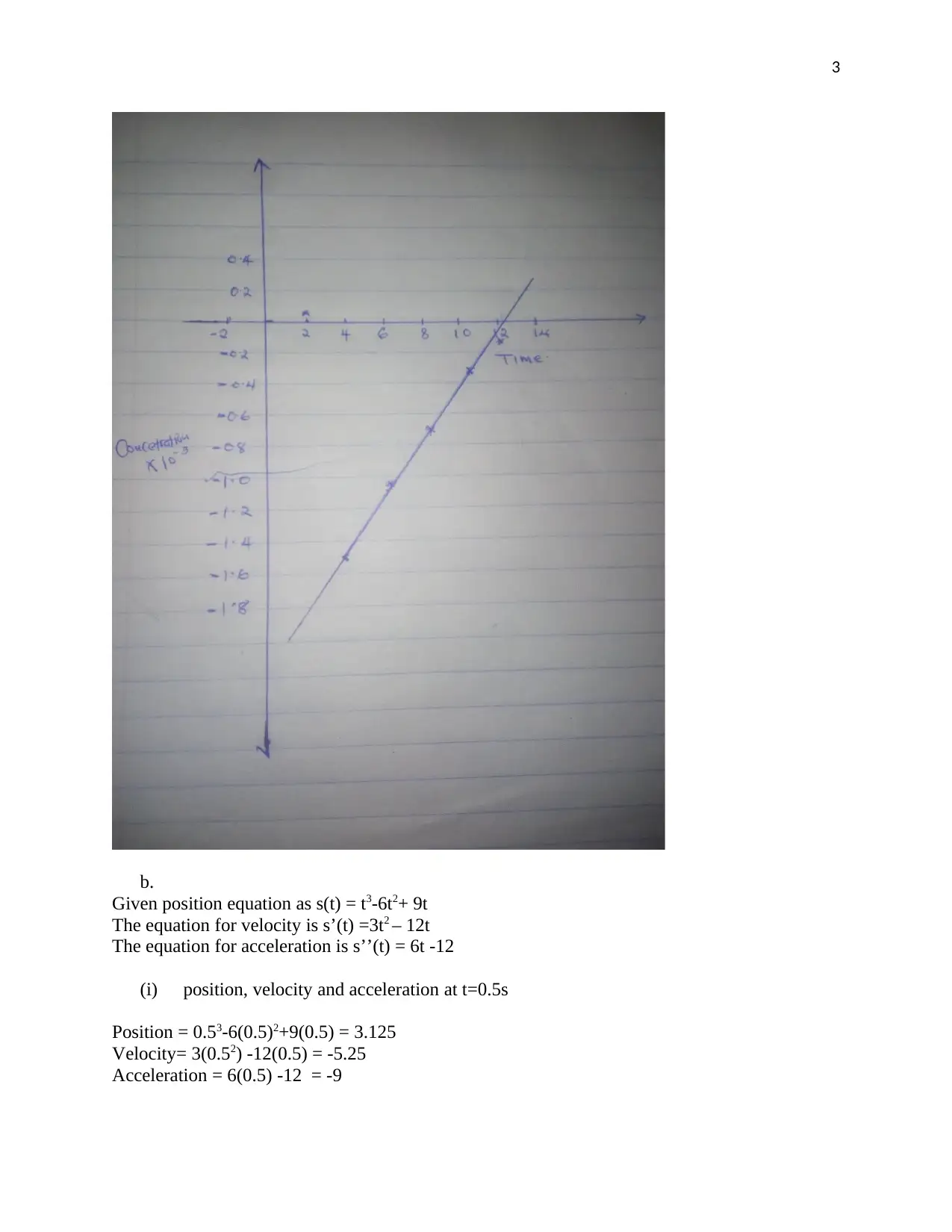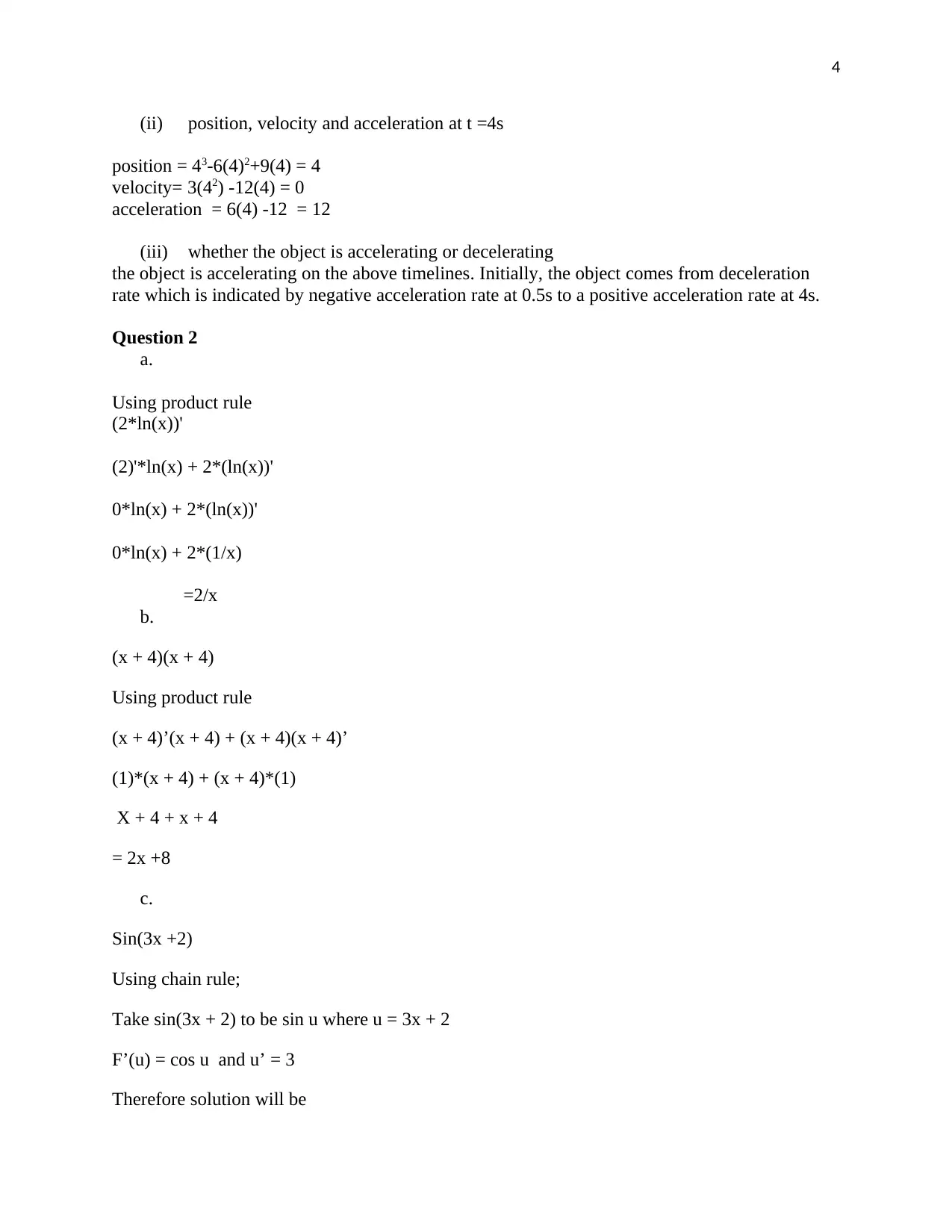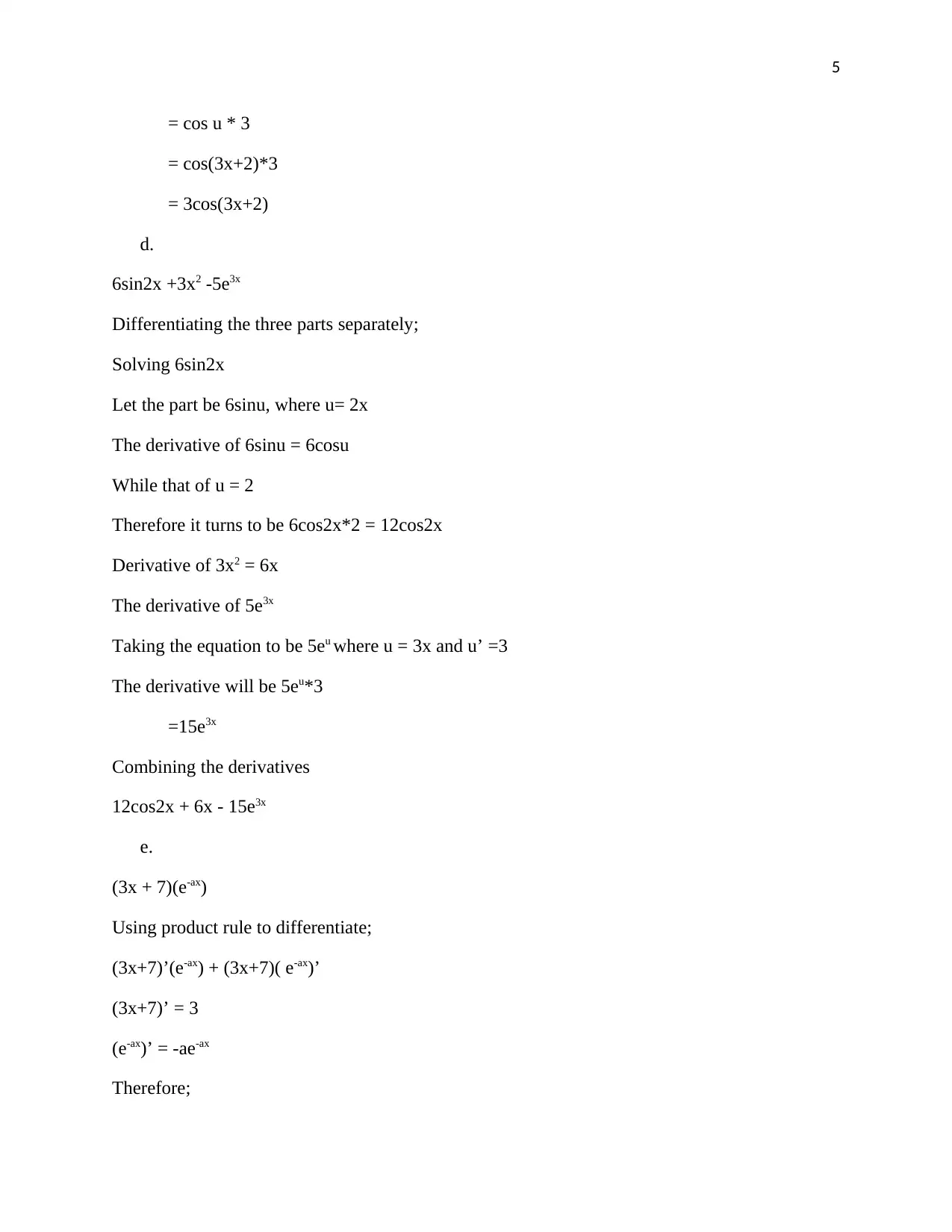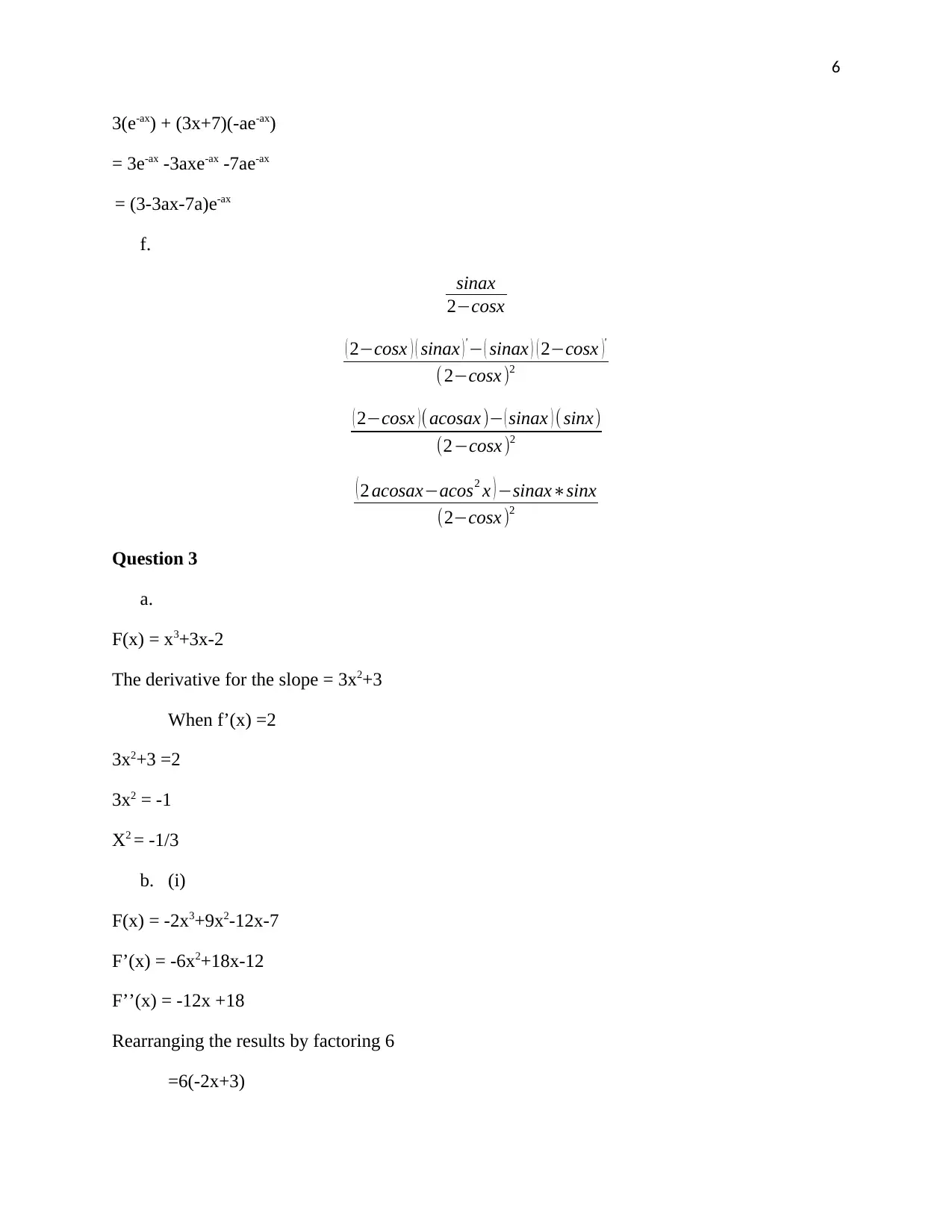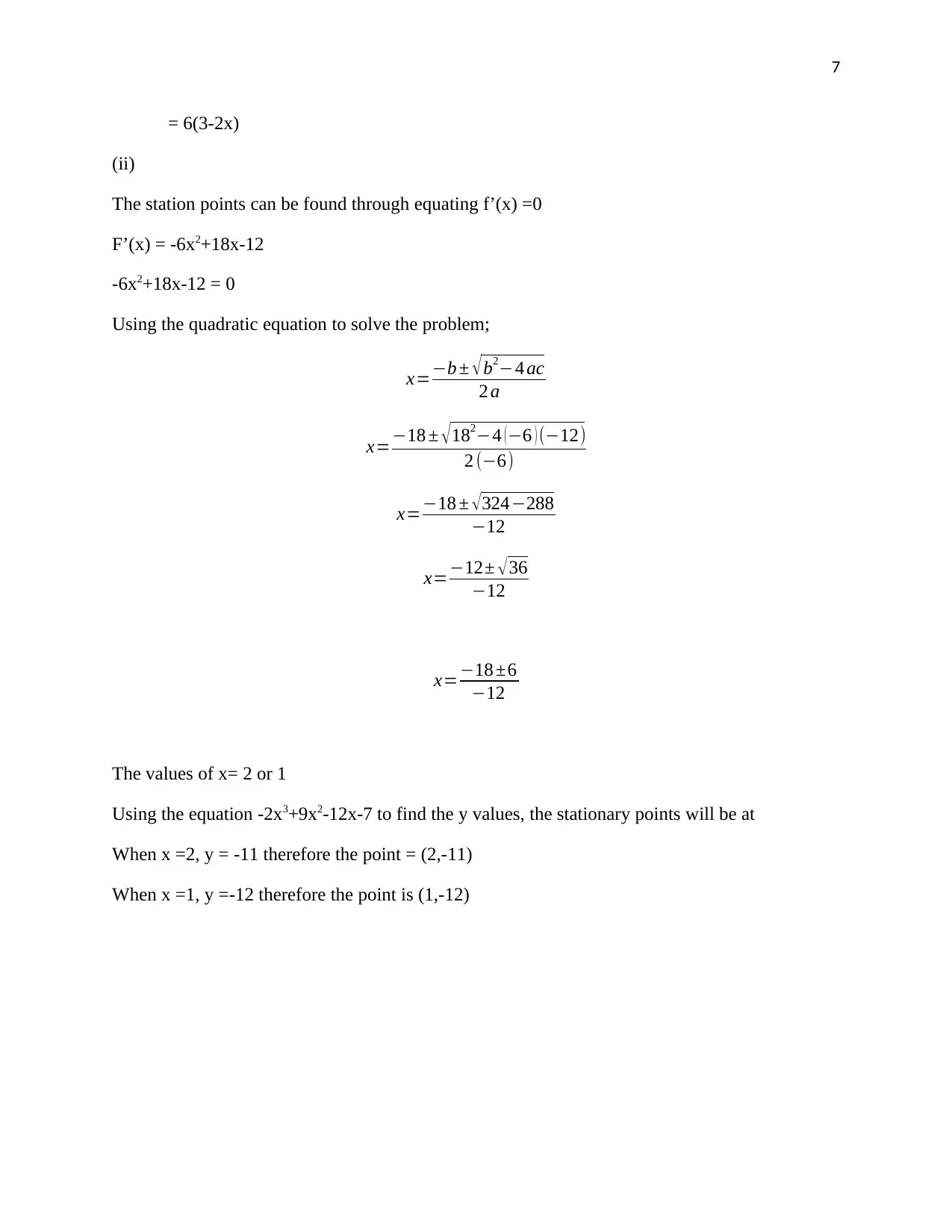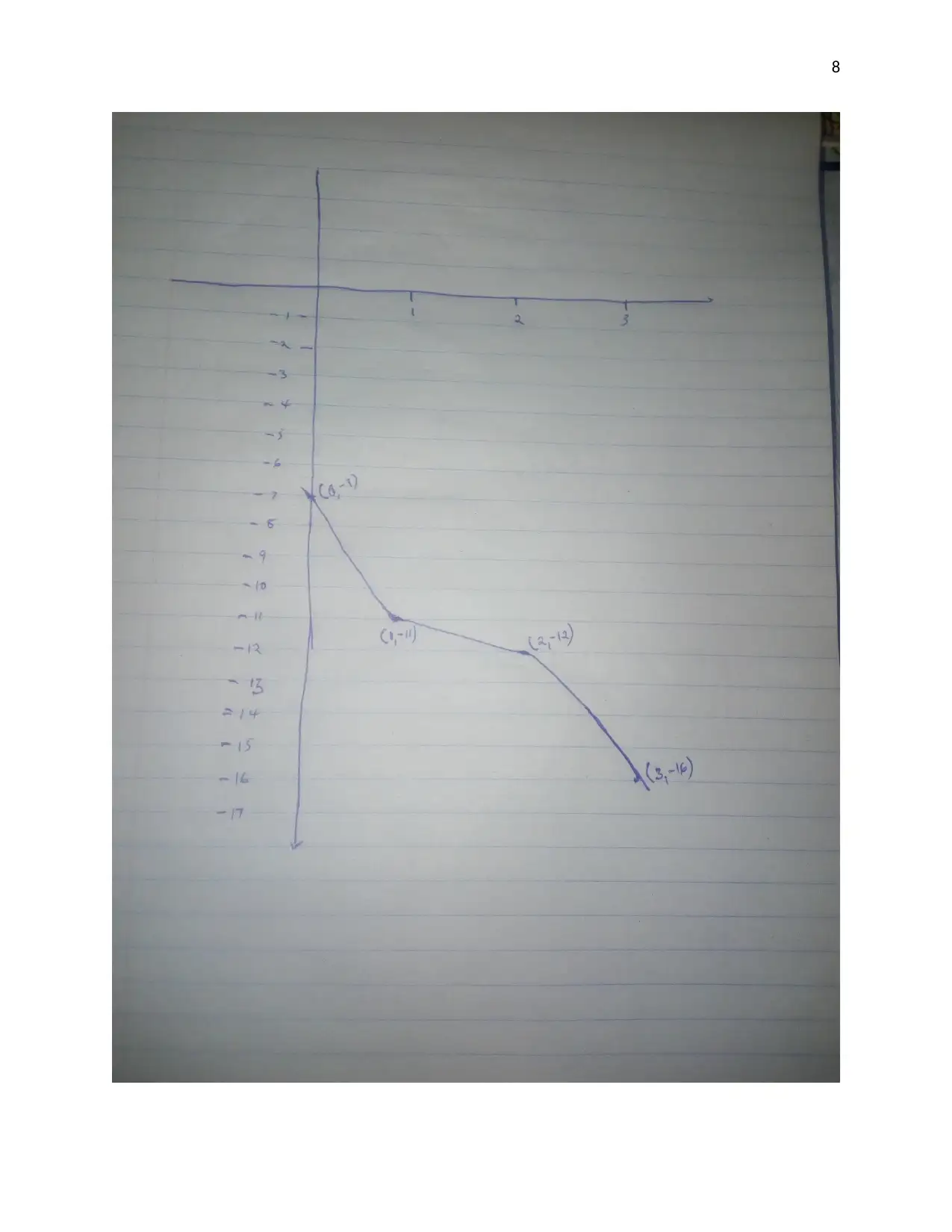Calculus I Assignment: Derivatives, Applications, and Analysis
VerifiedAdded on 2023/06/15
|8
|899
|412
Homework Assignment
AI Summary
This calculus assignment solution covers a range of topics including derivatives, rate of change, and applications of calculus. It begins by finding the rate of change of nitrate concentration using the quotient rule and calculating the concentration at a specific time. It also includes graphical representation based on provided values. The assignment further delves into finding position, velocity, and acceleration at given time intervals. Solved problems include applications of the product rule and chain rule for differentiation, involving functions like ln(x), trigonometric functions, and exponential functions. Finally, the assignment determines stationary points of a given function by finding its first and second derivatives and solving for critical points. Desklib offers more solved assignments and past papers for students.
1 out of 8

